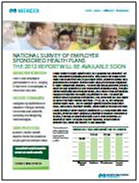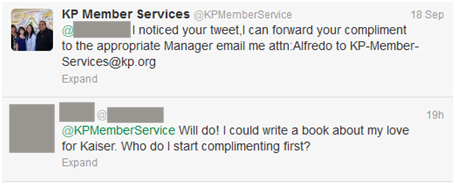By Kim Bellard, November 8, 2012
I have no doubt that many very smart people, and especially ones who were more directly impacted by Sandy than I was, will be doing extensive debriefings about Sandy’s impacts, and coming up with lots of far-reaching recommendations for next big disaster. Still, I wanted to throw in a few thoughts about a couple lessons Sandy has for HIT.
One of the unexpected learnings from hurricane Katrina in 2005 was a boost in the perceived need for electronic health records, as many paper records were lost or destroyed by the storm, and as Louisiana residents widely dispersed across the country. The paper and place systems for health information were found severely lacking, and Katrina was a clarion call to move health information into the 21st century.
Seven years later, we have, in fact, seen much progress on that front. HITECH was passed to stimulate the adoption and “meaningful use” of EHRs. Over 300,000 physicians and4,000 hospitals received HITECH incentive payments through 3Q 2012 – some $7.7b. Those numbers are expected to grow rapidly, and the increasingly tough meaningful use standards will drive better use of the data in the EHRs.
That’s all good news, and it would be easy to see how HIT should have helped mitigate some of the woes from Sandy. Instead, what we’ve seen makes me wonder if we’ve learned anything at all.
Sandy caused hundreds of hospitalized patients transferred, with some entire hospitals closed due to flooding. That’s obviously not good for patients, but understandable under the circumstances. I couldn’t help but wonder what was happening with their records. Did all their information travel to the new hospitals, or was everyone forced to start from scratch?
Best case scenario, the patient might have transferred to a sister hospital that used the same systems. The worst case scenario, of course, was that the records were only on paper which was lost or destroyed. The most frustrating scenario, though, would be that both the old and new hospital had electronic records, but that the respective hospitals couldn’t communicate.
Unfortunately, this latter scenario is all too likely. David Whitlinger, the health of SHIN-NY, the statewide HIE for New York, cited disasters such as Sandy as why we need health information exchanges (HIEs). He’s exactly right, of course – but even he couldn’t say how many of the impacted New York hospitals were participating in SHIN or were able to take advantage of its capabilities. I suspect that if they had any big success stories from Sandy, they would be touting them.
I’m not picking on SHIN-NY. HIEs are facing problems in many places. In Michigan, for example, there are two statewide HIEs, which can’t communicate with each other. According to the eHealth Initiative, HIEs biggest concerns included developing a sustainable business model, and competition from other HIEs. Most of them still aren’t doing anything as sophisticated as transmitting entire patient records. It would be comical if it wasn’t so depressing, and if my federal tax dollars weren’t subsidizing these efforts.
HIEs are supposed to ensure interoperability and transmission of patient and clinical data, but those battles are still being fought. A recent report from KLAS Research indicates that providers express dissatisfaction with their HIE vendors, including their ability to move data between multiple EMRs. Respondents mentioned, for example, that Epic scores well for connectivity, but not with non-Epic installations…which sort of makes the capability moot.
Then there is mHealth, a term that was only just beginning to be used when Katrina hit in 2005. It’s now a big deal: the mHealth market is estimated to double in 2012, to over $1.3b, with literally thousands of mHealth apps on the market, from the trivial to the FDA-approved. It is no wonder that mHealth has taken off; over half of the U.S. population now has a smartphone, with two-thirds of new purchases being smartphones. According to the Pew Internet & American Life project latest findings, almost 20% of smartphone users have health apps.
Sandy showed us that we’re not quite ready for prime time on this front either. Let’s start with the availability of mobile networks. The New York Times reported on the spotty service and infuriated customers. As one impacted resident said, “not having hot water is one thing, but not having a [cell]phone? Forget about it.” The Times pointed out that one of the recommendations from Katrina was better emergency back-up mechanisms for the wireless carriers, such as longer-lasting emergency batteries, which have not been widely adopted. The wireless carriers have resisted many of the regulators’ efforts, and were not routinely providing their outage statistics the way, say, the power companies were during Sandy. The Wall Street Journal had a similar story.
So much for having any of those fancy mHealth apps; just think about any chronically ill patients who might have been being remotely monitored by their physicians when Sandy hit. The wireless carriers are not yet seeing their mission as providing life-critical support to their customers, and it is getting harder and harder to understand why.
Sandy emphatically illustrated that wireless service is one that emergency planners will have to take very seriously going forward. It has obvious implications for contacting friends and family, getting status updates on the disaster and recovery efforts, and helping direct affected people to assistance. I only hope they take mHealth equally into consideration. Not just for the things it does every day, but how to further take advantage of its capabilities when providers and their places of care are unavailable or limited. Just think of how telehealth, remote monitoring, prescription history, and other applications could be useful in the aftermath of a Sandy.
Sandy has also firmly re-enforced Katrina’s lesson about health records. We heard that lesson, and have spent much time, effort, and money on it since Katrina, but we find ourselves not much better off in making health records more fluid. The EHR/HIE industries and their various customers need to step up their efforts and fix this problem -- hopefully before the next Sandy.
I like the point that Brian Dolan of Mobihealthnews made in a recent post: technology is forcing us to rethink the classic concept of “point-of-care,” focusing more on where the patient is, not where the provider is, or even if the patient and provider are physically in the same place. He was writing more from a mHealth perspective, but the paradigm shift applies broadly, as those evacuated Sandy patients could attest.
In the 21st century, health information can’t be tied down to paper or even to place, but has to be able to follow the patient wherever he/she receives care.

 Share This Post
Share This Post 













